Montreal Canadiens: 10 Worst Transactions Since Patrick Roy Trade

The Montreal Canadiens are a proud franchise with a rich history of stars and wins. They also have made some blunders along the way. Let’s take a look at some of the more recent head-scratchers.
The Montreal Canadiens have a long, storied history of success. They have the most Stanley Cups won, the most Hall of Fame players, the most wins in the history of the game. The most consecutive Cup seasons were five by the Habs from 1956-60.
The list of achievements goes on and on. However, every team has some skeletons in their closet. 21 years ago yesterday, the Habs made perhaps the biggest blunder in hockey history. Rejean Houle was the general manager of the team and overreacted to a spat between his coach, Mario Tremblay and his superstar goaltender Patrick Roy.
Roy was sent to he Colorado Avalanche, all but guaranteeing they would win the 1996 Stanley Cup. In return, the Canadiens got an underwhelming package of Andrei Kovalenko, Martin Rucinsky and Jocelyn Thibault.
More from Editorials
- Montreal Canadiens: Senators Rebuild At Crisis Point As Kent Hughes Moves Forward
- Montreal Canadiens: Jonathan Drouin Continues Charity Work In Montreal After Leaving Habs
- Montreal Canadiens: Laval Rocket Lineup Going To Be Must Watch
- Montreal Canadiens: Jesse Ylönen Contract Extension Analysis
- Montreal Canadiens: Top 31 Prospects – #31 Quentin Miller
The trade put the Avs over the top and put the Habs into their darkest period in the team’s 107 year history. The Habs would not get past the second round of the playoffs for the next 14 years, and missed the postseason in four of five between 1999-2003.
The Roy trade set a new bar for terrible trades in the NHL. No one has matched it since, but not for lack of effort if you take a look at some of the head-scratching decisions made by those in charge of the Habs over the past 21 years.
Let’s take a look at the ten worst moves by the organization in the last 21 years.
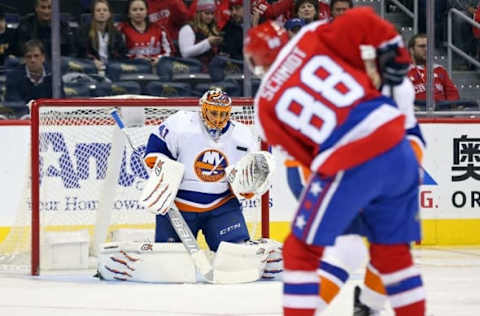
#10: June 17th 2010, Jaro Halak is traded for Lars Eller and Ian Schultz
Halak was an unknown when the Canadiens drafted him in the ninth round of the 2003 NHL Draft. He quickly made a name for himself as a prospect by playing well at the QMJHL, ECHL and AHL levels.
In 2006-07 his progress was rewarded when he was brought up to the Canadiens for the first time. He had a 2.00 goals against average and a .932 save percentage in 28 games for the Hamilton Bulldogs that season. The following year, he posted a 2.10 GAA and .929 SV% in 28 more games.
Halak became the Habs number one goaltender in the 2009-10 season by outplaying Carey Price. He had a 2.40 GAA and .924 SV% in 45 contests. The Slovakian goaltender was at his very best in the 2010 postseason.
The Canadiens pulled off perhaps the greatest upset in hockey history when they eliminated the Washington Capitals in seven games. The only reason they even made it to game five, let alone won the series was the play of Halak. He was equally brilliant against the Pittsburgh Penguins in the second round, carrying the team to the Eastern Conference Final.
With his value at an incredible high at the age of 25, Pierre Gauthier dealt him for Lars Eller who was coming off an 18 goal in 70 game AHL season and Ian Schultz who was a mediocre scorer in the WHL.
Eller’s offensive game never developed, and Schultz could barely get into the AHL. Eller is a good third line center, but Halak’s value was through the roof in 2010. There were rumours that teams were surprised that Halak was even available, suggesting Gauthier didn’t do his due diligence before making the deal.
Gauthier was wide to move Halak and keep Price, but the return for Halak was quite underwhelming.
#9: February 26th 2008, Cristobal Huet is traded for 2nd round pick
The Huet trade to the Washington Capitals at the 2008 trade deadline made little sense for the Canadiens. The team had a rookie, Carey Price and a solid veteran in Huet in net. Jaro Halak was just 22 and was playing well in the AHL.
At the deadline, though the Canadiens were fighting for first place in the Eastern Conference, they traded their starting goaltender. You would think a team in first would need to be blown away to move their starter. However, all the Habs got back was a 2nd round pick.
Huet was having a solid year, posting a 2.56 GAA and .916 SV%. Price’s stats were almost identical in the regular season. Once the postseason came around, the 20 year old Price self destructed in an embarrassing second round defeat to the Philadelphia Flyers.
While the rookie goalie struggled, the Habs had no choice but to keep running him out there against the Flyers. Had they kept Huet, he would have provided a great option to give the team a much better chance against Philly.
However, the team decided at the trade deadline to go into seller mode and gave up their starter to a team who finished ten points behind them in the standings. I still don’t understand the trade to this day.
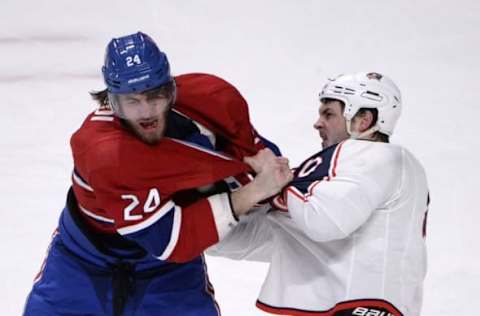
#8: June 25th 2010: Canadiens Draft Jarred Tinordi
The Montreal Canadiens held the 27th overall pick thanks to Halak’s aforementioned heroics in the 2010 postseason. The Canadiens decided to trade that pick with a 2010 second rounder to move up five spots and draft Jarred Tinordi.
Not only is the fact the Habs gave up a second round pick to move up five spots a terrible idea, Tinordi has proven to be a bust. The Coyotes ended up with Mark Visentin and Oscar Lindberg with the Habs original selections.
Montreal, in a league that is becoming faster every year, decided they needed to move up and get 6’6″, slow moving Tinordi. They could have salvaged the trade if they decided to take the best player available with the 22nd pick.
Hanging out there although everyone knew he had tremendous skill was Evgeny Kuznetsov. The Capitals eventually took him 26th and the 24 year old center scored 77 points last season. Tinordi hasn’t been able to make the Arizona Coyotes lineup and they remain the second worst team in the league.
#7: December 9th 2011, Habs trade Jaroslav Spacek for Tomas Kaberle
Maybe Gauthier just doesn’t like people named Jaroslav? It’s a bit of a different name for a french guy, but is that the only reason he obviously traded Halak and Spacek for the first offer that came along?
There was a lot wrong with this trade. First, Spacek was a better player than Kaberle. Second, Kaberle had two and a half more years on his contract while Spacek’s was about to expire. Third, Carolina Hurricanes general manager Jim Rutherford had publicly complained about Kaberle’s fitness and claimed his own signing was foolish.
Kaberle was an offensive force in his day, but was coming to Montreal after scoring zero goals and nine assists in 29 games. He was earning $4.5 million per year and had to be bought out before he was able to fulfill that contract.
He scored 22 points in 43 games in that first half season with Montreal but was a defensive liability. He played ten games the following year before being asked to stay home.
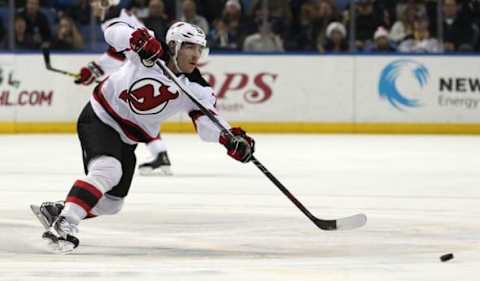
#6: January 12th 2012, Habs trade Mike Cammalleri to the Calgary Flames
Cammalleri signed a huge contract with the Canadiens on July 1, 2009. He was brought in to score goals and he sniped 26 in 65 games. He followed that up with 13 goals and 19 points in 19 playoff games.
His second season in Montreal he scored 47 points in 67 games and then ten points in seven playoff games. The Canadiens were miserable in 2011-12, Cammalleri’s third year in Montreal and he paid the price by being traded mid-game, thats right, to the Flames.
Cammalleri was shipped to Calgary with Karri Ramo and a 5th round pick for Rene Bourque, Patrick Holland and a 2nd round pick. Bourque was atrocious in Montreal, Holland is not an NHL player and Fucale looks less and less like a prospect every time he puts on the pads.
Cammalleri meanwhile, continues to score goals everywhere he goes. He’s bees injured a lot, but in two “full” seasons in Calgary after the trade he scored 26 goals in 63 games and 27 in 68. This season, the 34 year old has 17 points in 19 games.
Man, wouldn’t he look good on the left side of one of the Habs top two lines right now?
#5: September 30, 2006, Habs trade Mike Ribeiro to the Dallas Stars
Ribeiro was once a blossoming second line center with plenty of offensive upside. He delivered and then some on that promise. Unfortunately, many teams other than the Canadiens benefited from his production, because the Habs dealt him just before the 2006-07 season began.
Ribeiro led the Habs in points in 2003-04 and was fourth on the team after the lockout. The Canadiens dealt him to the Stars for Janne Niinimaa. The Finnish defender played 41 games for the Habs, scored three points and was never heard from again.
Ribeiro continues to be a productive second line center for the Nashville Predators more than a decade after the deal. Ribeiro has scored 630 points since the Habs sent him packing. There were rumours a deal needed to be made because of off-ice issues, but a deal for Niinimaa and nothing else was the wrong move.
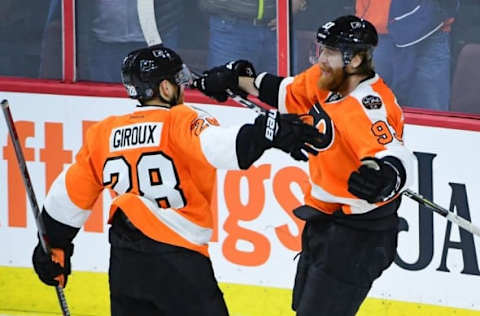
#4: March 10th, 1999, Habs trade Mark Recchi back to Flyers.
The Canadiens made an awful trade when they acquired Mark Recchi from the Flyers. The Habs gave up John LeClair and Eric Desjardins, but hey, at least they got a great scoring winger. Years later, they would decide that trade wasn’t bad enough so they gave Recchi back.
Well, they didn’t exactly give him back, but they may as well have. The Habs dealt Recchi to the Flyers for Dainius Zubrus, a 2nd round pick and a 6th rounder. In six of the next seven seasons, Recchi would score more than 60 points.
The future Hall of Famer played 12 more seasons and was a productive winger the whole time, never falling out of a team’s top six. He won a pair of Cups and was a solid contributor on both occasions.
Zubrus scored 42 points in his only full season with Montreal. Recchi had 91 points that season and topped Zubrus production with 48 points at the age of 42.
#3: June 24, 2006, Habs draft David Fischer
It is easy to look back on almost every draft and wonder why your team didn’t make all the right picks. Every team looks bad when a player like Brendan Gallagher goes in the fifth round, or Pavel Datsyuk and Henrik Zetterberg come out of nowhere to be superstars.
Sometime though, these bad decisions on draft day look like they should have been avoided. Such is the case when it comes to the Habs in 2006. Montreal elected to take David Fischer with the 20th overall pick. He was a physical defenceman playing College hockey in Michigan.
Fischer has turned out to not have a career in North America and is currently plying his trade in Germany. Taken two picks later, right out of the Habs backyard was Claude Giroux. This makes taking Fischer that much worse of a decision.
Giroux didn’t exactly come out of nowhere to be star either. He had scored 103 points in 69 games with the Gatineau Olympiques. Why wouldn’t the Habs want an offensive star who was playing in Quebec?
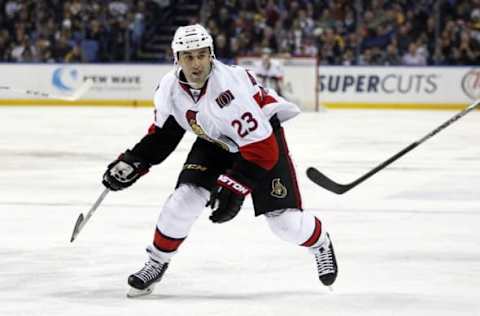
#2: October 29, 1996, Habs trade Turgeon to the Blues
Well, Houle couldn’t outdo his Roy trade for worst in franchise history, but he came close. Pierre Turgeon played parts of two seasons with the Habs and one full season. When he arrived in 1994-95 he scored 20 points in 15 games.
His only full season, 1995-96, the Rouyn-Noranda, Quebec native scored 96 points in 80 games. He followed that up with 11 points in nine games to start 1996-97. His 127 points in 104 games is actually the second highest points per game total in Habs history, behind Guy Lafleur.
Turgeon was dealt to the St. Louis Blues with Craig Conroy and Rory Fitzpatrick for Murray Baron, Shayne Corson and a fifth round pick. You could make the argument that is Turgeon wasn’t involved, that it would be an even deal. In fact, Conroy is definitely the second best player in the trade.
Corson stuck around the NHL for eight more years, but wasn’t more than a third liner. Baron was a fighter at best and just bad at hockey at worst. Conroy would play 1000 games after the trade and had some great years with the Flames.
Turgeon averaged more than a point per game for the next five seasons with the Blues. He was a terrific playmaker and finished his career with 97 points in 109 career playoff games.
#1: June 30, 2009, Canadiens trade McDonagh to the Rangers for Gomez
What were the Habs thinking? Gomez was a vastly overpaid player who had worn out his welcome in New York. He was thought to be untradeable due to his $50 million contract. However, the Habs took on every penny of the deal with five years left on it and gave up one of their top prospects to do so.
All told, the trade was McDonagh, Chris Higgins, Pavel Valentenko and Doug Janik for Gomez, Tom Pyatt and Mike Busto. It pretty much boiled down to McDonagh for Gomez. The Alaskan center scored 12 goals and 59 points in his first year in Montreal.
It pretty much matched his output from the previous season, but it wasn’t nearly enough for one of the highest paid forwards in the league. Gomez dipped the next season to seven goals and 38 points before dropping to 11 points in 38 games.
Though his cap hit would suggest he was one of the league’s best players, Gomez was asked by Candiens general manager Marc Bergevin to stay home during the lockout shortened year. He wanted to buy Gomez out at the end of the season, but the league made an exception to allow the Habs to dump their overpaid center immediately.
McDonagh was a first round pick and developed into a top pairing defenceman for the Rangers. Adding insult to injury, he was excellent in the 2014 Eastern Conference Final when the Ranger knocked off the Habs en route to the Stanley Cup Final.
Taking on Gomez contact could only have been considered doing a favour to the Ranger Glen Sather. Deciding to give the Rangers our top prospect who developed into a top defender makes it the worst move Montreal has made since trading Roy.